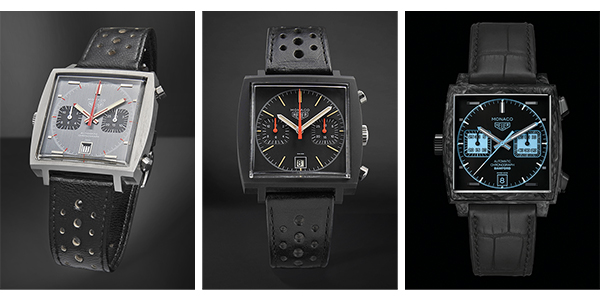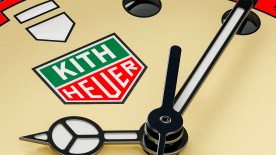While out walking she was astonished to see so many “tuned” cars on the streets of the small Alsatian town. As you know, tuning is a form of expression that involves personalising your car by adding numerous accessories and extras and sometimes results in designs that look strange, to say the least. Whatever your opinion about such modifications is, they are all based on the same objective: being recognised, seen and accepted as a different and unique individual. But why were there so many of these cars in the streets of this Alsatian town? Because a lot of them were made in the workshops of Sturny Tuning, which just happened to be in the next street! That’s what gave rise to the now famous word “sturnyse”, which we still use today in our family!
The last time was at the supercar get together that is held on the first Sunday of the month in the car park of Moulin, the French restaurant at Newport Beach. There was a royal blue Koenigsegg parked next to a matt black gurkha Terradyne. And my young son cried out “Look at the two sturnysed cars!”. The word had manged to cross the Atlantic and pass from one generation to the next.
And it may soon be added to the American English vocabulary!
Cars, sturnysation and watches: This is our subject for today.
Let’s start with a fact: we all like to set ourselves apart and have something “different” that allows us to express our personality. Cars are one of the most visible ways of doing so. Beyond being a simple vehicle, for many people they are also a form of expression. This is what led to the art of customization or tuning. Reviled or adored, it is a subject that is as divisive as it is fascinating. Isn’t this one of the reasons why so many people like the “Fast & Furious” franchise, whose first film was a lyrical ode to Japanese tuners?
Tuning covers a wide spectrum and has a controversial image. There is low-end tuning (I can see some of you smiling) and the more “noble” art carried out by recognised specialists (the word sounds a lot more classy). There is something for everyone and every budget, but they share the same ethos: satisfying someone’s ego and transferring the pleasure of the brand’s design to the individual.
Some car brands have understood this need and teamed up with some of these mechanical sorcerers: Mercedes and Brabus or AMG, Alpina and BMW, Abarth for Fiat, Cooper for Mini, Amuse, or Autech and Top Secret for Toyota or Nissan. The list doesn’t end there and there really is something to suit every taste.
But what about watch brands?
If there is one object that allows us to express our style and establish our personality, it’s the watch. Like with cars, it was obvious that “sturnysation” would eventually spread to our wrists. After all, the first watches were produced as unique pieces for kings, queens, sultans and maharajahs!
But how long did we have to wait for the first “tuned” watches? The watch industry follows the same trends as for cars. First, in the distant past, there were unique models, then industrialisation and finally the era of personalisation. In the years after the second world war, the watch became a mainstream product that was practical. It later became a mass-produced consumer good in the quartz era. In the early 1990s it slowly started to lose its functional side. It became an item of fashion or status. This is how it slowly entered the phase of sturnysation!
First we saw limited series. It’s difficult to know who exactly invented the term and the trend. But what is certain is that it was the idea of a genius and one that watch brands use and abuse!!! What is a limited series other than a means for collectors to say “I’ve got one and you haven’t” or “look at me, I managed to get one because I am recognised”?
Like in the world of tuning, there are different types of limited editions: the genuine (small series, a number of modifications compared with the standard model, difficult to obtain) and the not-so-genuine (large production volumes with only cosmetic changes). There are even limited editions that are not even limited, just “numbered”, whose production is… limited!
There are hardly any watch brands that do not use this marketing device, which works well after all, precisely because of us watch fans. There are even watches that create the same effect without even needing limited editions. For example, Rolex restricts access to some of its steel models to make them virtually inaccessible. It is the concept of very limited production for non-limited series. But limited does not mean unique. And this is where we find the new frontier: how to create – and produce – genuinely individual watches.
First of all, we need to differentiate between bespoke and made to measure. The former may be the work of a master watchmaker who produces by hand exceptional pieces in very limited numbers based on a customer’s requirements, just as a shoemaker or tailor would. There are few brands in this category and their strictly limited production sells for prices that are commensurate with their rarity. There are, however, new players in the made to measure category who make substantial modifications to existing models, often limited to the design.
Armed with their limited-edition strategy, many of the brands that belong to the major watch groups had ignored this category for a long time – too long. They left the creativity of bespoke to the independent brands and refused to see the emerging trend for made to measure, leaving the market free for unofficial tuners or a handful of microbrands like the very appealing Undone.
For a number of years it has been possible to buy customised watches from design studios, but these tuned watches voided the warranty and were no longer recognised or certified by the brands who produced them. Although we can understand the reasons for this decision from a quality assurance point of view, we cannot help but detect an element of disdain and an attempt to nip a flourishing business in the bud because it is not in sync with the more classical mentality of our Swiss watch brands.
But things change and this is why we are talking today about this astonishing TAG Heuer Monaco Bamford.
Why TAG Heuer AND Bamford ?
On my right, the watchmaker: the name Heuer is of course famous and we don’t need to dwell go over its history and its iconic models here. What is interesting about the brand from La Chaux-de-Fonds, however, is its ability to alternate between classicism and disruption. We see the classic in legendary models like the Monaco, Autavia and Carrera, but the disruption comes in various forms. We could mention, for example, the exceptional Heuer 02 Tourbillon, which made more accessible a complication that had for too long been considered exclusive. There is also the TAG Heuer Connected, for which we are eagerly awaiting the third version scheduled for 2019. Or the Monaco V4 with its belt drive. There have also been some interesting marketing decisions, associating the brand with cycling or China’s space exploration programme, once again defying conventions.
On my left, the tuner: Bamford Watch Department (BWD). The company was born in 2004 in London from the vision of George Bamford, which was to offer watch collectors advanced personalisation services. The idea quickly became controversial, pitching purists against avant-gardists. For some, changing the look of a Rolex was a crime. For others, giving their Nautilus a new look was a way of pushing the need for exclusivity even further. The debate is still raging on, without any sign of a conclusion.
This is why it’s interesting. Horological “sturnysation” may upset, attract or repel, but it is moving forward nonetheless.
TAG Heuer has understood this and made its move in 2017 by asking Bamford to become their official tuner along the lines of the partnerships in the automotive world. More than anything, the alliance is the result of a meeting between two disruptive visionaries: Jean-Claude Biver and George Bamford. It was so successful that the two brands joined forces in a world first. BWD now focuses its activities on the brands of the LVMH group (TAG Heuer, Bulgari, Hublot and Zenith), and the brands will continue to certify the authenticity of the customised watches and guarantee after-sales service.
The TAG Heuer Monaco Bamford: Fun and furious
Take an historical, recognisable and classic model: the Monaco, the first water-resistant square watch, worn by Steve McQueen, Stanley Kubrick and Anthony Bourdain. Add a 39mm carbon case, directly inspired by the Monaco V4 of 2004 – which also evokes the blackness of the Dark Lord. The most famous among vintage Monacos is not called the Dark Lord for nothing. Reference 740303N is interesting for more than one reason. When Heuer launched the Monaco, it wasn’t a commercial success. It was too much of a break with convention and the designs of the period. It was square, solid, had two chronograph pushers on the right and a crown on the left. To relaunch it and stimulate demand, the people at Heuer took the daring step of coating it with black PVD and putting the crown back on the right. Only 100 to 200 of these Dark Lord models were ever produced, making one of the most sought-after models among collectors.

Our TAG Heuer Monaco Bamford therefore establishes a link between the past and present, between the high tech of the V4 and the daring and provocative design of the Dark Lord. It keeps the modern Monaco attributes – including the calibre 11 – but also opts for an easily recognisable dial. It’s black, uses the Heuer signature (not TAG Heuer) at 12 o’clock with Bamford at 6 o’clock. But what is surprising is the choice of the “aquablue” colour, which is one of the signatures of BWD. It is a very light blue found on many of the company’s creations. The association between black and blue can sometimes be a risk, but in the case of the TAG Heuer Monaco Bamford, it works.

I think one of the main reasons for this success is the texture of the carbon itself, which eases the transition between blue, grey and black. So we find aquablue on the chronograph counters, the date and the circled railway track that is so characteristic of the Monaco. Even the hands are coated with the signature BWD colour. The watch is fitted with a matt black strap that matches the style of the watch well. Its folding clasp is the same found on all other Monaco models. I particularly like this clasp, which is one of the most comfortable but also one of the easiest to adjust. In short, this limited series by a tuner gives you a chronograph that breaks a lot of rules and also shows you the possibilities offered by personalisation. If you like it, you’ll need to head over to the Bamford website and create your own model. There are a huge amount of options and although the interface is easy to use, the choice is difficult. Not everyone is a born designer!
What does the devil’s advocate think?
He’s not going to come back to the aforementioned debate. But it’s true that the Monaco BWD will bother fans of the classic designs. But that’s why I like it so much!
Furthermore, we could even complain that TAG Heuer and BWD did not go far enough! But maybe they are saving this for later and a future model. We could also complain about the use of carbon, whose longevity has not yet been fully proven. But let’s give craziness and innovation a chance!

My main reproach is the busy dial with its numerous inscriptions, words and logos. I would happily have removed the “Automatic”, “Chronograph” and either the Heuer logo or the “Monaco” for a purer and cleaner design.
How should you wear this TAG Heuer Monaco Bamford ?
Despite the colours and the material used, the Monaco BWD remains a rather classical watch. Its reasonable size means that it can be matched with a number of different outfits and looks. The strap could be swapped for a classic black leather in the “driver” style that would look just as good as the matt black alligator leather supplied as standard. You could also go for stitching that matched the colour of the dial, which would add a touch of originality.

I could see this TAG Heuer going well with a dark-grey polo shirt (a Zanone in “ice cotton”) and maybe a jacket similar to the style worn by Jean-Claude Biver. I always liked the style of the brand’s CEO and his penchant for longer and destructured jackets and shirts. They remind me of the clothes by the Barcelona-based brand Bel & Cia and their famous Teba hunting jacket. For the trousers, try a grey Bernard Zins BZV3 in organic cotton or one from their chino collection. Finally, for the shoes, let’s stay with the LVMH group, where Berluti offer some of the best bespoke creations. Jean-Michel Casalonga would be delighted to turn your dreams into reality. My final piece of advice would be to go for a classic shape but with a provocative patina!
It would be an ideal way of paying tribute to the TAG Heuer Monaco Bamford.







